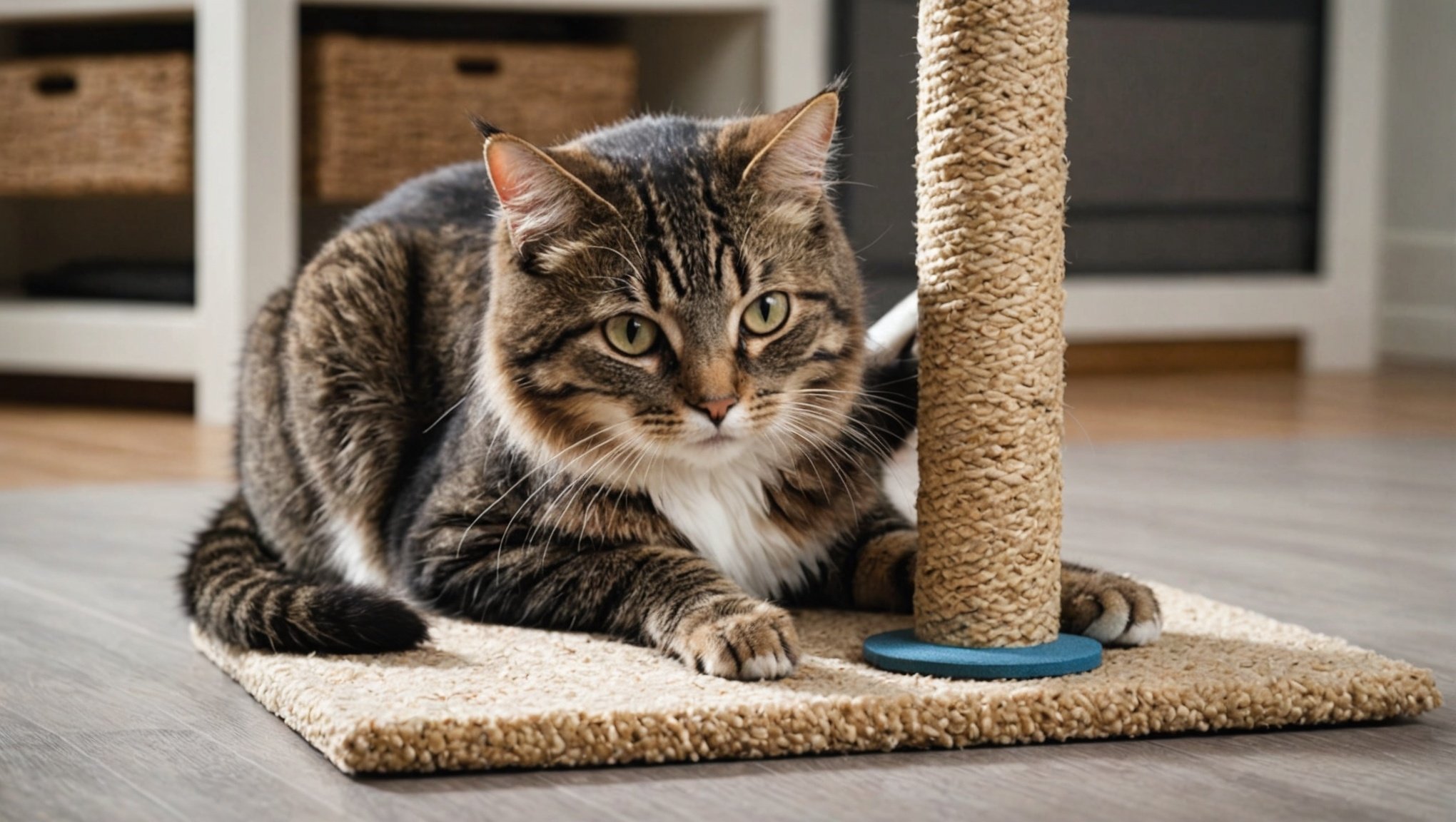Mastering Cat Training: Effective Techniques for Encouraging Your Feline to Embrace the Scratching Post
Understanding Your Cat’s Behavior
Before diving into the specifics of training your cat to use the scratching post, it’s crucial to understand why cats scratch in the first place. Scratching is a natural behavior for cats, serving multiple purposes such as marking territory, exercising, and maintaining their nails. Here are some key points to consider:
- Territorial Marking: Cats have scent glands in their paws, and when they scratch, they deposit their scent on the surface. This helps them mark their territory and feel secure in their environment.
- Exercise: Scratching allows cats to stretch and flex their muscles, particularly in their back, legs, and paws.
- Nail Maintenance: Scratching helps cats shed the outer layers of their nails, keeping them sharp and healthy.
- Comfort and Relaxation: Cats often scratch before resting or sleeping, as it seems to be a calming behavior for them.
Preparing Your Home for Effective Cat Training
To encourage your cat to use the scratching post, you need to create an environment that supports this behavior. Here are some steps to prepare your home:
Have you seen this : Essential Tips for Safely Welcoming a New Bird into Your Established Flock
Choose the Right Scratching Post
- Material: Cats prefer different textures, but many like sisal rope or carpeted posts.
- Height: Taller posts allow cats to stretch and scratch comfortably.
- Location: Place the scratching post in a high-traffic area or near your cat’s favorite resting spot.
Remove Attractive Alternatives
- Secure Furniture: Use double-sided tape or aluminum foil to deter cats from scratching furniture, as these surfaces are often unappealing to them.
- Provide Alternatives: Offer multiple scratching posts and pads to give your cat options.
Positive Reinforcement
- Reward Good Behavior: Whenever your cat uses the scratching post, reward them with treats, praise, or playtime. This positive reinforcement encourages the desired behavior.
Effective Training Techniques
Positive Reinforcement Training
Positive reinforcement is a powerful tool in cat training. Here’s how you can use it to encourage your cat to use the scratching post:
- Treats and Praise: Place treats on or near the scratching post to entice your cat to use it. Praise your cat when they scratch the post.
- Clicker Training: Use a clicker training kit, like the CAT SCHOOL Clicker Training Kit, which includes a target stick and clicker. This method helps in guiding your cat to the scratching post and rewarding them immediately when they use it.
Target Training
Target training is another effective technique that involves using a target stick to guide your cat to the desired location.
Also to see : Mastering the Art of Canine Training: A Positive Reinforcement Guide to Teaching Your Dog to Roll Over
- Use a Target Stick: Extend the target stick towards the scratching post and encourage your cat to follow it. When they touch the post with their paw or nose, click the clicker and reward them.
- Gradual Transition: Start by placing the target stick near the scratching post and gradually move it further away, encouraging your cat to follow and use the post.
Practical Insights and Actionable Advice
Here are some practical tips to help you in your cat training journey:
Be Patient
- Training a cat takes time and patience. Don’t expect immediate results, as cats can be stubborn at times.
Observe Body Language
- Pay attention to your cat’s body language. If they seem stressed or uninterested, it may be best to try a different approach or give them a break.
Consistency is Key
- Consistency in training is crucial. Set aside specific times each day for training sessions to help your cat understand what is expected.
Use the Right Tools
- Invest in high-quality training tools like clickers and target sticks. These tools can make the training process more efficient and enjoyable for both you and your cat.
Common Mistakes to Avoid
When training your cat, it’s important to avoid common mistakes that can hinder the process:
Punishing Bad Behavior
- Avoid punishing your cat for scratching the wrong surfaces. This can create anxiety and make the training process more difficult.
Ignoring Positive Behavior
- Always reward positive behavior. Ignoring your cat when they use the scratching post can confuse them and make them less likely to continue the behavior.
Inconsistent Training
- Consistency is key in cat training. Irregular training sessions can confuse your cat and slow down the learning process.
Real-Life Examples and Anecdotes
Here’s an example of how one cat owner successfully trained their cat using positive reinforcement and target training:
“I was struggling to get my cat, Luna, to use the scratching post instead of my furniture. I decided to try clicker training with the CAT SCHOOL Clicker Training Kit. I placed treats on the scratching post and used the target stick to guide her towards it. Every time she touched the post, I clicked the clicker and gave her a treat. Within a week, she was using the scratching post regularly, and our furniture was finally safe. It was amazing to see how quickly she learned with positive reinforcement and target training.”
Comparative Analysis of Training Methods
Here is a comparative analysis of different training methods you can use to encourage your cat to use the scratching post:
| Training Method | Description | Pros | Cons |
|---|---|---|---|
| Positive Reinforcement | Rewarding good behavior with treats or praise. | Encourages desired behavior, builds trust. | Requires patience and consistency. |
| Clicker Training | Using a clicker to mark the exact moment of desired behavior. | Precise and immediate feedback, effective. | Can be noisy if not using a quiet clicker. |
| Target Training | Using a target stick to guide the cat to the scratching post. | Helps in guiding the cat, visual cue. | May require more time to get the cat accustomed to the stick. |
| Removing Alternatives | Securing furniture and other surfaces to deter scratching. | Reduces unwanted scratching, simple to implement. | May not address the underlying behavior if not combined with positive reinforcement. |
Training your cat to use the scratching post is a rewarding process that requires patience, consistency, and the right techniques. By understanding your cat’s behavior, preparing your home, and using effective training methods like positive reinforcement and target training, you can encourage your feline friend to embrace the scratching post.
Remember, every cat is different, so it may take some trial and error to find the method that works best for your pet. With the right approach and tools, you can create a harmonious home where your cat feels comfortable and secure, and your furniture remains intact.
As one cat owner aptly put it, “Training turned into playtime, filled with purrs, feather chases, and treat-fueled celebrations. It was a journey that not only improved my cat’s behavior but also strengthened our bond.”











